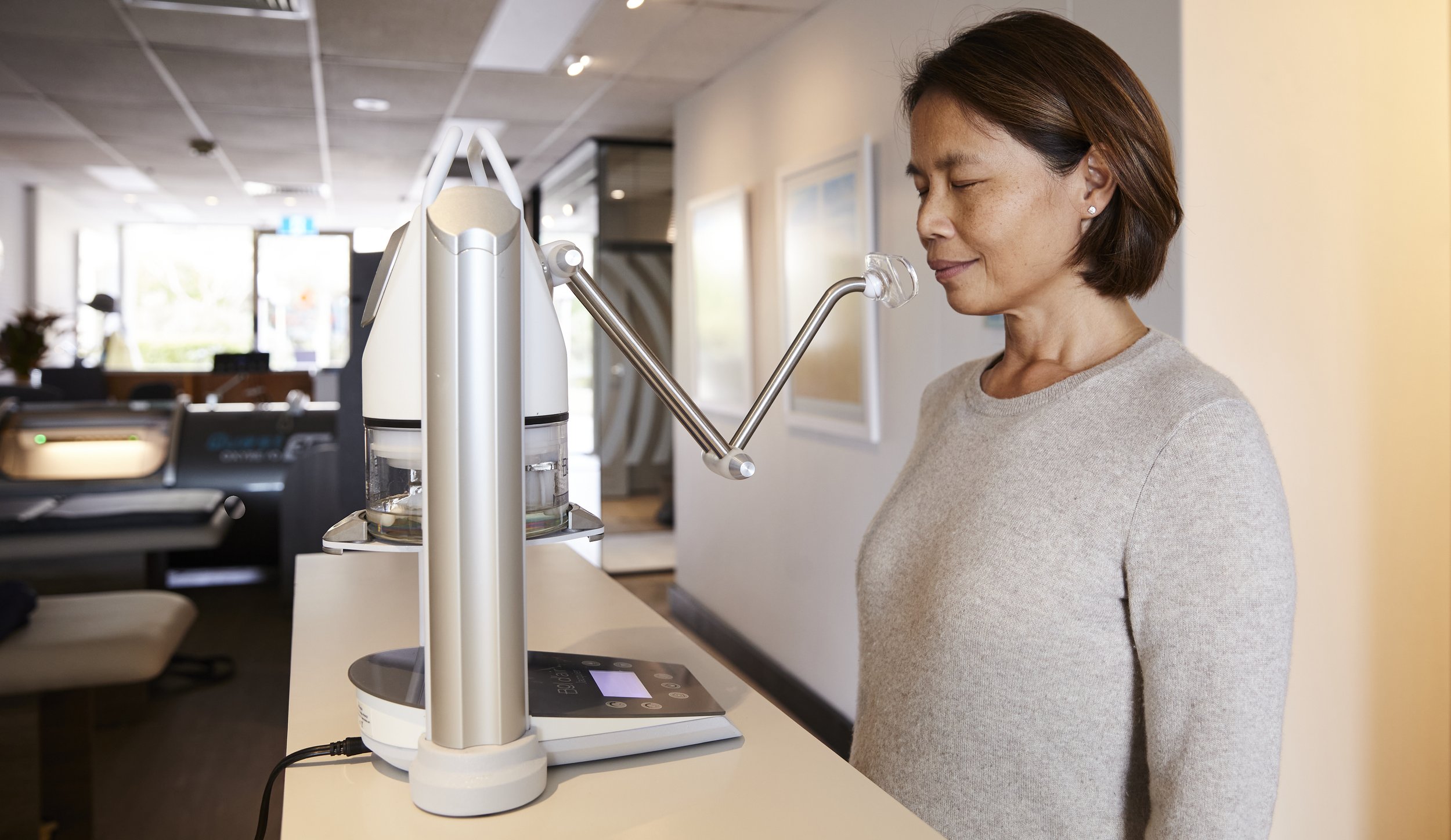
Bol d’Air
Bol d'Air is a revolutionary method developed by pioneering chemical engineer René Jacquier with the aim of improving and normalising cellular oxygenation without the need for added oxygen. Observing the beneficial effects of fresh air, particularly in areas with coniferous trees, René noted the presence of terpenes—components of pine resin—that make oxygen more accessible to cells. He then invented the biocatalytic oxygenation method and produced his first Bol d'Air prototypes in 1947.
What to Expect:
Session: During a Bol d'Air session, you sit in front of the device, 5 cm from the corolla and breathe normally.
Monitoring: Our technicians ensure proper technique to maximise the benefits of a Bol d'Air session.
Duration: First sessions usually last for 2-3 minutes, with a gradual increase in duration in subsequent sessions, up to 15 minutes.
How Does the Bol d'Air Method Work?
The Bol d'Air method is a unique oxygenation technique that utilises molecules extracted from pine resin (turpentine) rich in alpha and beta-pinene molecules that have a high affinity for oxygen. These pinene molecules serve as oxygen carriers, facilitating better distribution of oxygen to tissues and enhancing cellular respiration. By delivering oxygen in a highly assimilable form, the Bol d'Air method optimises oxygen uptake and utilisation at a cellular level.
The Importance of Cellular Oxygenation:
The primary role of oxygen is to allow the body to produce energy for its own needs and its physical, psychological, and cerebral activities. Mitochondria, small cellular organelles, in the presence of oxygen, transform the nutrients resulting from metabolism into energy that is directly usable by the cell (ATP). Therefore, good mitochondrial health is the source of vital energy.
Hypoxia is defined as a reduction in oxygen supply to the tissues and occurs when the oxygen supply is too low compared to what the cells require. This may happen due to air pollution and smoking, respiratory and circulatory diseases, stress, intense physical exercise, a sedentary lifestyle, ageing, and altitude.
Under-oxygenation (hypoxia) leads to alterations in metabolism, resulting in incomplete biochemical reactions for the assimilation of nutrients and waste accumulation in the body. The body also produces excess free radicals, increasing oxidative stress and affecting the nervous system, possibly contributing to chronic fatigue, nervousness, and memory impairment.
Bol d'Air Method Targets:
Improved cellular respiration without the risk of oxidative stress associated with oxygen deficits or excess.
Enhanced mitochondrial function, leading to increased energy production and strengthened anti-radical defences.
Better distribution of oxygen to tissues, promoting vitality and overall well-being.
Improvement of symptoms related to cerebral hypoxia, e.g., chronic fatigue, nervousness, or memory issues.
Limitation of the impact of under-oxygenation factors, such as air pollution, smoking, or a sedentary lifestyle.
For more information:
Mercier B, Prost J, Prost M. Antioxidant activity of Bol d'Air Jacquier breathing sessions in Wistar rats--first studies. Int J Occup Med Environ Health. 2008;21(1):31-46. doi:10.2478/v10001-008-0003-2 https://pubmed.ncbi.nlm.nih.gov/18482901/
Lesgards JF, Durand P, Lassarre M, et al. Assessment of lifestyle effects on the overall antioxidant capacity of healthy subjects. Environ Health Perspect. 2002;110(5):479-486. doi:10.1289/ehp.02110479 https://pubmed.ncbi.nlm.nih.gov/12003751/
McCord JM, Edeas MA. SOD, oxidative stress and human pathologies: a brief history and a future vision. Biomed Pharmacother. 2005;59(4):139-142. doi:10.1016/j.biopha.2005.03.005 https://pubmed.ncbi.nlm.nih.gov/15862706/

